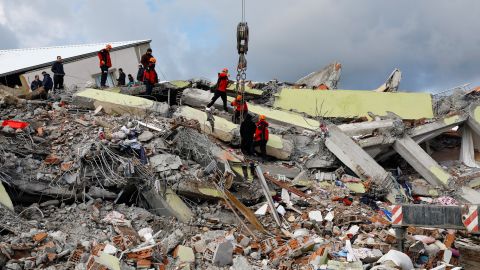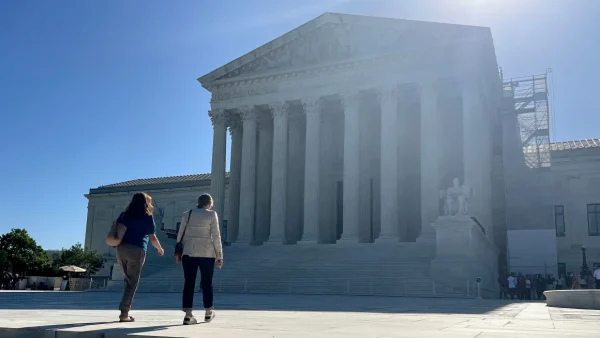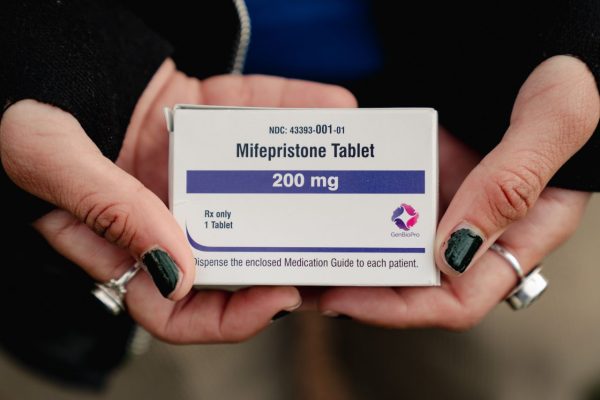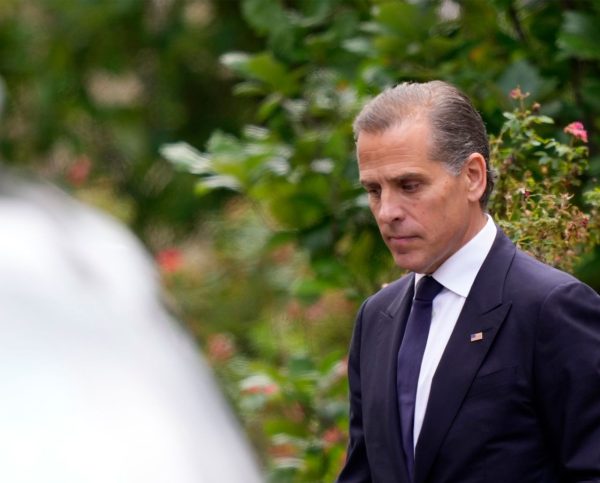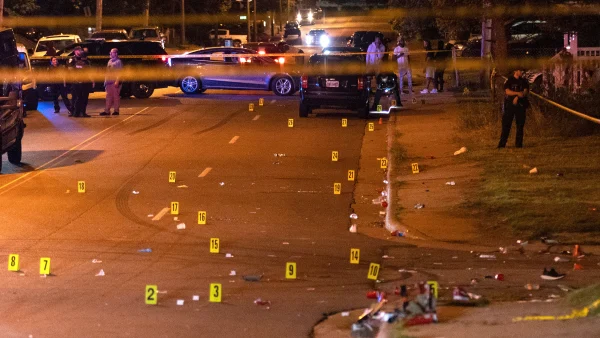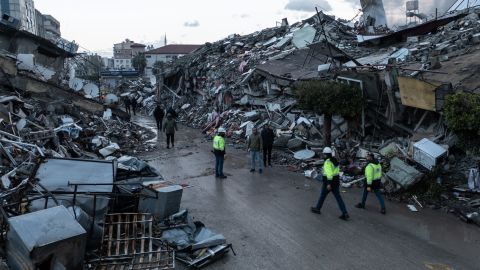
Heavy snowstorms have recently hit parts of Syria and Turkey, according to CNN meteorologist Haley Brink, and by Wednesday already cold temperatures are expected to plummet several degrees below zero.
Photos taken in earthquake-hit cities in southeastern Turkey show families huddling around fires to keep warm. Some sought shelter in buses, sports centers, mosques and underneath temporary tarpaulin tents – structures sturdy enough to withstand further aftershocks or flimsy enough not to cause severe injury should they collapse.
At least 5,606 structures crumbled during the quake and in the hours after, Turkey’s Disaster and Emergency Management Agency (AFAD) said. Iskenderun State Hospital in the city of the same name was among them, Koca, the health minister said.
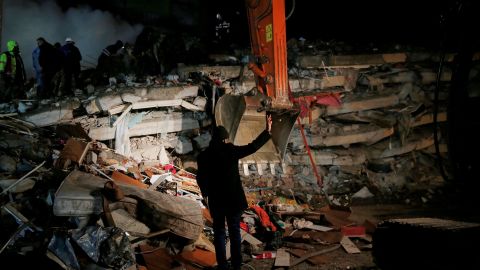
“We are trying to save the medical workers and patients there,” he added. “These sorts of disasters can only be overcome with solidarity.”
Authorities in Turkey have advised drivers to stay off the roads to leave them clear for rescue operations. Broken concrete, scraps of metal, and overturned cars remain strewn across many roads and streets, making it difficult for rescuers to reach some areas.
By late Monday, at least 300,000 blankets, 24,712 beds, and 19,722 tents had been sent to the quake-affected areas, AFAD said.
Kishor Jaiswal, a structural engineer at the US Geological Survey, warned there was a risk more buildings could collapse, presenting challenges to rescue operations.
“There is still a small chance of seeing an aftershock strong enough to bring those deteriorated structures down,” he told CNN Tuesday. “People should take a lot of care in accessing those weakened structures for these rescue efforts.”
Highlighting that point was Becky Anderson, anchor of CNN’s “Connect the World,” who was reporting live from outside a partially collapsed seven-story building in Gaziantep, southern Turkey, Tuesday.
She said that four people, including two adults and two children, had been pulled out alive from the rubble but that rescuers were working to find 20 who are thought to be beneath the debris.
“We’re told by the search and rescue team here that the manager of this building suspects that it will not last more than 24 hours so there’s obviously a desperate attempt to get anybody else out of here alive,” Anderson said.
What’s happening in Syria?
In neighboring Syria, a country already suffering the effects of civil war, the devastation is widespread. At least 1,602 were killed across government-controlled areas and opposition-controlled areas, officials said.
The “White Helmets” group, officially known as the Syria Civil Defense, which operates in opposition-controlled areas, said Tuesday “the numbers are expected to rise significantly because hundreds of families are still under the rubble.”
Much of northwestern Syria, which borders Turkey, is controlled by anti-government forces, and aid agencies warn of an acute humanitarian crisis that is likely to be felt for months to come.
Dr. Bachir Tajaldin, Turkey country director at the Syrian American Medical Society, told CNN’s “This Morning” that the situation in Syria is complicated by political instability.
“The situation in Turkey is coordinated through a very well developed government. They have infrastructure, they have rescue teams,” Tajaldin said.
“In northern Syria, most of the services are provided by NGOs (non-governmental organizations) and through humanitarian aid. There is no central government to take care of the multi-sectoral response,” he said.
El-Mostafa Benlamlih, the United Nations’ Humanitarian Coordinator in Syria, told CNN the search and rescue mission was being hampered by the lack of heavy equipment and machinery.
He said the UN’s supply of stock has been distributed and more medicine and medical equipment is needed, and especially fresh water or tools to repair damaged water tanks.
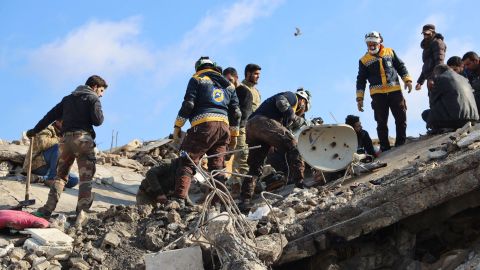
Around 4 million people in northern Syria were already displaced and relying on humanitarian support as a result of war, according to James Elder, spokesman for UNICEF, the United Nations Children’s Fund. This winter had been particularly tough due to the freezing conditions and a cholera outbreak.
“Everyone is overstretched in that part of the world … there is an enormous amount do,” he said. “People have fled their homes often standing around in bitterly cold conditions really without access to safe water. So water is key. Blankets, food, psychological support.”
Hospitals in the country are overwhelmed as victims seek help, with some facilities damaged by the quake. And there is particular concern about the spread of illness, especially among children, who were already living in extreme hardship.
A volunteer with the “White Helmets” said the organization does not have enough help to handle this disaster.
“Our teams are working around the clock to help to save the injured people. But our capabilities, our powers are not enough to handle this disaster. This disaster is bigger than any organization in northwest Syria,” Ismail Alabdullah told CNN. “This disaster needs international efforts to handle.”
What’s been the international response?
The international community has been quick to offer assistance to Turkey and Syria as the full scale of the disaster becomes clear.
By Tuesday morning, planes carrying aid from Iraq and Iran, including food, medicines and blankets, arrived at Damascus International Airport in Syria, Syrian state media SANA reported.
Japan announced it would send the country’s Disaster Relief Rescue team to Turkey, and on Monday night, the first of two Indian disaster relief teams left for Turkey with dog squads and medical supplies. Pakistan has also dispatched two search and rescue teams to the ravaged country, while Australia and New Zealand committed funds for humanitarian assistance.
The European Union activated its crisis response mechanism, while the United States said it would send two search and rescue units to Turkey. Palestinian civil defense and medical teams will also be sent to Turkey and Syria to help in rescue operations.
Meanwhile, 10 units of the Russian army with more than 300 soldiers are clearing debris and helping in search and rescue operations in Syria, Russia’s Defense Ministry said. Russia is the strongest foreign power operating in Syria, and Russian President Vladimir Putin has long allied with Syrian President Bashar al-Assad.
The United Nations Office for the Coordination of Humanitarian Affairs (UNOCHA) said emergency response teams from the United Nations Disaster Assessment and Coordination (UNDAC), the International Search and Rescue Advisory Group (INSARAG) and the WHO’s Emergency Medical Teams (EMT) are being mobilized to Turkey to assist in the humanitarian response.
“The UN and partners are closely monitoring the situation on the ground and are looking to mobilize emergency funds in the region,” the UNOCHA said in a report Monday.
But on Tuesday, UNOCHA spokesperson Madevi Sun-Suon told CNN that aid shipments from Turkey to Syria have been “temporarily disrupted due to road challenges.”
CNN’s Sahar Akbarzai, Ruba Alhenawi, Mitchell McCluskey, Mayumi Maruyama, Manveena Suri, Gul Tuysuz, Mia Alberti, Hira Humayun and Hande Atay Alam contributed reporting.


